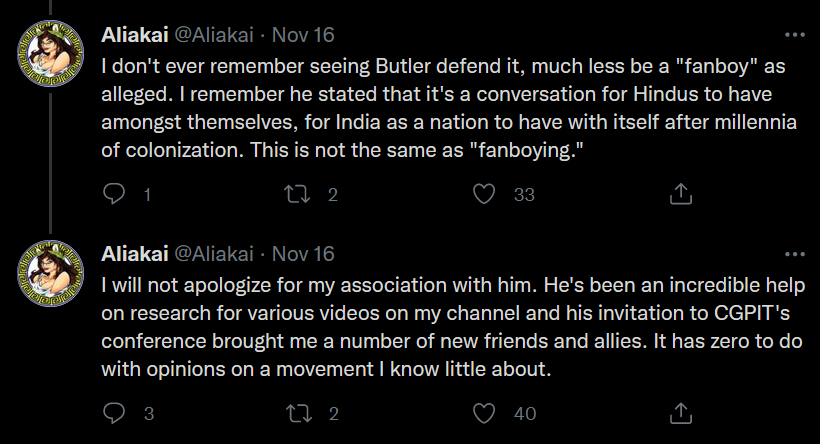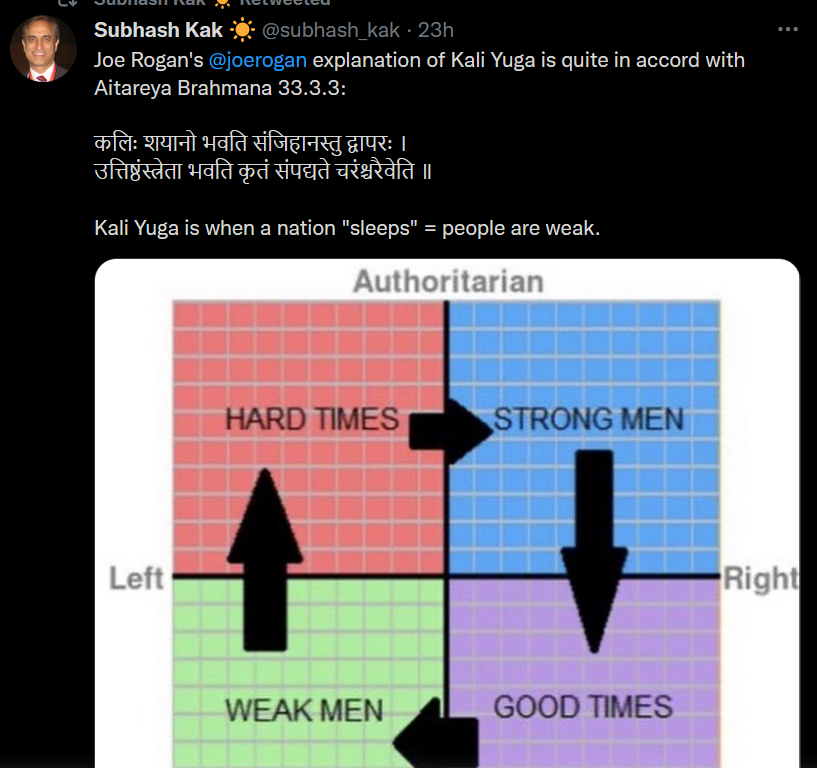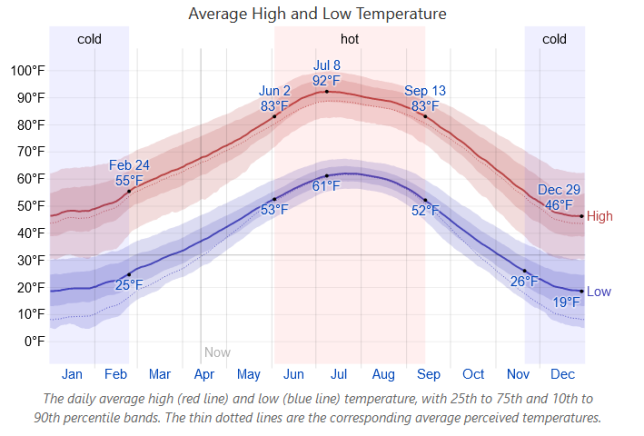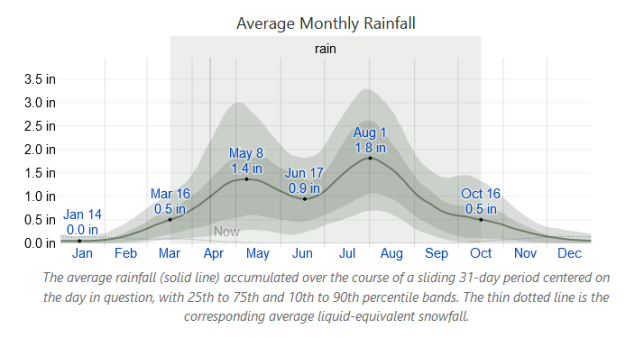For anyone who has been in the community for any length of time, you’ll know that the name “Ed Butler” has been a as bit of a jaw clencher. He is the person who runs the henadology site, and while his information about the ntrw has always been great, the company he’s kept has been questionable at best for a while now. Originally aligning himself with the Piety Posse, including the likes of Krasskova and Sannion, he’s always had a tendency of not caring how awful his colleagues are, so long as the ~polytheists~ are able to band together.
Tl;dr: his problematic track record continues. This post is incredibly long and details about his current love affair with Hindu nationalism. There are two much shorter posts detailing this here and here. There is another post that goes into much more detail about the history of hindutva as it relates to Indica here.
Background Information
Butler is currently acting as the director of the Center for Global Polytheist & Indigenous Traditions with a group called Indic Academy. Indic Academy is one of several branches that exists under the umbrella group ‘Indica.’ If you ask Butler about Indic Academy, he will tell you that it’s a “non-political educational group.” However, you only need to take a quick look under the hood to see that this is an incredibly inaccurate take, which I’ll get to momentarily.
When people began to question his affiliation with said group that seems to have clear ties to Hindu Nationalism, plenty of folks came to his aid to say that foreigners have no place discussing India’s politics because it is “complex” and “emotionally charged,” including Butler himself:





Now, I don’t see why foreigners don’t seemingly have the brain capacity to learn about the politics of another country and draw conclusions about the situation. Nor do I understand why each of these people is so quick to say “I don’t know anything about this” and then go “but I’m super duper sure Butler has done nothing wrong, and I refuse to educate myself to make sure.” But one thing I will say is that the rhetoric of “foreigners wouldn’t understand” feels like a cop out at best, or being a fascist apologist at worst.
For the record Aliakai has since retracted their support of Indica Academy, and has said that they have cut their ties with Butler.
ETA: Ptahmassu has also released a statement on it.
ETA (2): Rhyd Wildermuth has also released a post on it. CW: subtle racism, transphobia, general stupidity. If you didn’t know that Rhyd was garbage, well, now you do.
In response to this, Butler released a WP post where he attempted to defend his actions of participating in a group that has links to Hindu nationalism. However, his post was incredibly vague and is completely unhelpful for those who know nothing about the organization he works for or of the concept of “hindutva” that he mentions specifically in his post. Instead, the post talks about how he definitely isn’t a bigot, and that Indica (and subsequently, Indic Academy) doesn’t have any political motivation/affiliation, and that it shouldn’t be held responsible for “every wrongful tendency in contemporary Indian life, the cycle of violence, than any similar Christian or Muslim educational organization is made to answer for the worst actions or ideologies of any of their co-religionists.” This post is aimed to thoroughly explain to everyone what is going on, and why we really need to have a community discussion about issues such as this.
The Nature of Hindutva
At the center of this discussion is the concept of “hindutva.” Hindutva translates into “hinduness,” and on the surface, it doesn’t seem like it would be anything bad. In Butler’s post, he calls hindutva “elastic” and claims that it gets thrown at “Any celebration of Hinduism, and every affirmation of its value and articulation of its values” as a form of attack. This seems strange to me, because hindutva isn’t really an elastic term whatsoever. One only need to search “Hindu Nationalism” and find that hindutva has a very specific meaning and intention in our current era:
Hindutva (transl. Hinduness) is the predominant form of Hindu nationalism in India.[1] As a political ideology, the term Hindutva was articulated by Vinayak Damodar Savarkar in 1923.[2] It is championed by the Hindu Nationalist volunteer organisation Rashtriya Swayamsevak Sangh (RSS), the Vishva Hindu Parishad (VHP), the Bharatiya Janata Party (BJP)[3][4] and other organisations, collectively called the Sangh Parivar.
The Hindutva movement has been described as a variant of “right-wing extremism”[5] and as “almost fascist in the classical sense”, adhering to a concept of homogenised majority and cultural hegemony.[6][7] Some analysts dispute the identification of Hindutva with fascism, and suggest Hindutva is an extreme form of conservatism or “ethnic absolutism”. (x)(x)
https://en.wikipedia.org/wiki/Hindutva
Another example:
Hinduism is the name given to the most ancient and persistent religion on the Indian subcontinent, and Hindutva is the name by which the ideology of the Hindu right, represented by the political party Bharatiya Janata Party, or Indian People’s Party (BJP), is known. It is also the ideology of the cultural body known as Rashtriya Swayamsevak Sangh, or National Volunteer Core (RSS), which was founded in 1925 and with which the BJP has strong links. Ever since the rise of the BJP on the Indian political scene from 1990 onward, and its recent successes in national elections in India in 2014 and 2019, the question of the relationship between Hinduism as a religion and Hindutva as a political ideology has come to the fore, because the word “Hindu” is common to both.1 The exploration of the relationship between Hinduism as a religion and Hindutva as a political philosophy has become a virtual academic cottage industry that shows no signs of slowing down.2 In popular writings on the subject, Hindutva has been variously described as “Hinduism on steroids,” as “Hinduism which resists,” or as “an illegitimate child of Hinduism.” A preliminary way of understanding the difference between Hinduism and Hindutva would be to recognise that Hinduism is a religion (however defined) while Hindu nationalism, or Hindutva, is a political ideology, whose relation to the religion of Hinduism could be considered analogous to the relationship between Christianity and Christian fundamentalism or Islam and Islamic fundamentalism. There is, however, one key difference. Hinduism is a plural tradition, as compared to Christianity and Islam which possess well defined universal creedal formulations that are largely absent in Hinduism according to most observers. Therefore, Hindu “fundamentalism” is remarkably thin in terms of religious content as compared to Christianity and Islam. (x)
https://www.asianstudies.org/publications/eaa/archives/on-the-difference-between-hinduism-and-hindutva/
Or another quote:
https://www.sadhana.org/hindutva-101
Hindutva, also called Hindu nationalism, is a right-wing political ideology that guides the current ruling party in India, the BJP, under Prime Minister Narendra Modi. Sometimes, people will argue that Hindutva is “a way of life,” or that Hindutva simply means “Hindu-ness,” synonymous with Hinduism. However, Hindutva is a modern, political ideology that is barely more than a hundred years old. […] Hindu nationalist groups in India like the Rashtriya Swayamsevak Sangh (RSS) were inspired not by Hindu teachings, but by Nazi Germany and Mussolini’s fascists in Italy.
“The idea of fascism vividly brings out the conception of unity amongst people… India and particularly Hindu India need some such institution for the military regeneration of the Hindus… Our institution of Rashtriya Swayamsewak Sangh of Nagpur under Dr. Hedgewar is of this kind.”
So, to put it succinctly: hindutva is a right-wing ideology in India. Its goals are to create an India that is de-secularized, where Hindu tradition is the guiding metric for the entirety of the government and law. As the excerpt above mentions, its got similar ideologies to Christian Evangelism/fundamentalism here in the U.S. They want India and Hindu to become synonymous with one another, that Indian culture is inherently Hindu because to be Indian is to be Hindu. And that the only way to be truly Indian is to exclusively adhere to Hindu rules and traditions.
How Butler thinks hindutva is “elastic” is beyond me. It’s pretty concretely associated with fascism, and despite the clear distinction between hindutva and Hindu (they are not the same), Butler continues to misconstrue the two as being the same. He wants to rebrand what hindutva means, and I suppose its from that perspective that he considers it “elastic.”

To be 100% clear, hindutva is not an elastic term. It is associated with Hindu nationalism. The sources above say the exact same thing. Its the inherent fascism present in the hindutva movement that strives to make these two words mean the same thing. When trying to point out that they’re not the same, he refuses to accept that answer.
Have you ever seen a conservative try to tell you that not everyone that voted for Trump was a bigot? Have you ever watched their apologists try to tell you that Trump’s administration wasn’t promoting fascism by appealing to Evangelical Christians? This is basically the same thing.
In general, Hindutva seems to view monotheism as being the ultimate predator, with a special disdain for Islam in particular. After Hindu, Islam is the largest religious group in the country with approximately 14% of the population practicing the religion. According to most of the hindutva content I’ve flipped through, they view their religion (Hinduism) being under threat from Islam, as such, its not uncommon for Muslims (and other monotheists, such as Christians) to be lynched by hindutva mobs in India.
From that perspective, it certainly makes me feel like Butler’s post is echoing at least some hindutva rhetoric:

This isn’t an entirely new take for Butler. The entire Piety Posse seemed to share rhetoric about how monotheism was some boogey man that was going to get our polytheisms. From 2019:

From 2018:

(the link goes to a RW Hindu site, by the way.)
Now to cover my ass and make sure I clarify the obvious, that doesn’t mean that indigenous religions and cultures have not been under attack by Christianity in the past (with some being under threat now due to missionary work and modern colonialism), but I doubt that the third-to-fourth largest religion in the world (Hinduism) really needs to fear being snuffed out. Nor do most of us living in America really have any real basis to act like our religious practices are actively being snuffed out. I think we can all agree that religiously-driven colonialism is bad and should be stopped, but at the same time, not every monotheist in existence is actively trying to convert everyone they know. The fact that this distinction is not present in most of these conversations is troublesome.
I just really want to point out the fact that this mindset that Butler has always had really lines up nicely with hindutva’s disdain for monotheists as well. And of course, there are other parts of Indic Academy that mirror this rhetoric, so with this wider context in mind, let’s discuss Indic Academy’s place in all of this.
Indic Academy

According to Butler, Indic Academy has no political agenda whatsoever, and I’m not sure how one would draw that conclusion given that most think tanks are not apolitical. But even more than that, once you start looking at the specifics of what the various branches of Indica appear to endorse, the blatant nationalism just starts to flow out.
Indica was founded by an entrepreneur named Hari Kiran Vadlamani as a “not-for-profit think tank that aims to nurture and nourish scholarship in Indology, arm and groom public intellectuals in developing a Dharmic narrative.” Butler somehow interprets this as being “non-political” and goes on to state that Indic Academy “is no more required to answer for every wrongful tendency in contemporary Indian life, the cycle of violence, than any similar Christian or Muslim educational organization is made to answer for the worst actions or ideologies of any of their co-religionists.”
This would suggest that Indic Academy is getting blame for issues that are occurring within Indian culture that are not affiliated with Indic Academy. Further, it suggests that there are no signs of hindutva within Indica’s ranks. However, that doesn’t seem to be the case.
Hindu nationalism amongst team members
Let’s first talk about some of the figures present on their “team” page.
Their trustees of Indica involve Kiran, mentioned above, Dr. Aravinda Rao, Vishal Agarwal, and Avatans Kumar.
Kiran doesn’t have much available online about his politics, but the fact that he’s started a think tank with the specific intent to “groom” people, I’m not super inclined to consider him apolitical and without agenda given the rest of the content of the page. Dr. K Aravinda Rao was a top-ranking police officer who oversaw eradicating “left-wing extremism” in Andhra Pradesh. Who wants to bet that Dr. Rao leans towards the rightwing side?
The third trustee is Vishal Agarwall. I admit he was hard to find a lot of information on, but his author bio on Indica’s commentary site says that he’s received the Hindu American Foundation’s Dharma Seva Award, and the HAF is directly tied to Hindu nationalism.
Avatans Kumar’s twitter feed is filled with islamaphobia, pro-Savarakar and anti-vaccine posts. One of my favorite articles that he posted states that
The most remarkable aspect of India’s immunization program has been the absence of governmental threats, coercion, mandates, and manipulations. This feat is a testament to India’s Pradhan Mantri (Prime Minister) Narendra Modi’s relentless and determined hard work and honest and trustworthy leadership.
https://indiacurrents.com/indias-covid-immunization-program-is-a-model-for-democracies/
Their Academic Council is filled with all sorts of great characters.
There’s Meenakshi Jain, a historical revisionist who has been known to rewrite Indian history with a hindutva bent. Many of her works appear to foster mistrust and othering of Islam within Indian history, and you can see in this article here, she supports other books that reinforce this revisionist history. Including a book by Munshi, the person who chaired the meeting for the formation of Vishva Hindu Parishad, a Hindu nationalist group.
There is also Michel Danino, a French-born Indian who has been criticized of supporting historical revisionism in his works, which ultimately links back up to hindutva.
There’s also Subhash Kak, a revisionist historian. There is a relatively lengthy list of things he’s written that have been disproven scientifically, and most of his theories are not well regarded. With one of the more damning quotes being:
“In a critique of faulty scientific reasoning in Hindutva ideologies and theories, Alan Sokal sarcastically criticized Kak as “one of the leading intellectual luminaries of the Hindu-nationalist diaspora“[38] Koertge as well as Meera Nanda have remarked that Kak’s work advances a Hindutva-based esoteric pseudoscience narrative that seeks to find relatively advanced abstract physics in Vedic texts and assign Indian indigenousness to the Sanskrit-speaking Indic Aryans in a bid to prove the superiority of the ancient Hindu civilization.[23][24]“
https://en.wikipedia.org/wiki/Subhash_Kak
He also retweets Joe Rogan’s garbage

As a little easter egg, he and the founder of Indica are also advisors with Takshashila Institute of India Studies, and there are other members of Indica’s team that are present within this organization.
Prof M.D. Srinivas has been featured on the “Friends of the RSS” Twitter page for a book he co-authored about Ghandi. The RSS is a RW paramilitary group that is fueled by Hindu nationalism.
In their Environment, Social, Governance section, you’ll find even more signs of Hindu nationalism.
First on the list is Aditi Banerjee. When you scroll through her twitter account, you eventually come across posts featuring “HinduIsHindutva” hashtags and posts that claim that people criticizing hindutva are being “Hinduphobic.” The post specifically calls for a protest on the day that the AHA had its Dismantling Hindutva Globally conference.
Next to her is Sumedha Verma Ojha. She writes for Indica’s commentary site as well. An article she wrote that is quite telling of her views on leftist ideas:
In the Indian context it will also mean strings of “learned” articles on how the Indic/Hindu traditions regarding women must be abandoned if society is to move forward and women to achieve their potential. Leave the past behind, these learned intellectuals (or ignorant film actors as the case may be), will say, adopt the “feminist” point of view and the future will be in safe hands. The Marxist-Feminist viewpoint is deemed to be even more useful in the forward march of the female gender. In these approaches and definitions there is absolutely no space for an Indic perspective.
https://www.indica.today/long-reads/indic-roadmap-women-today/
Now I could keep going, but do I really need to? I’ve been through the top four rungs of their team structure, and out of 22 people listed, I have found that at least 9 people who have clear ties to Hindu nationalism. I emphasize clear, because I didn’t include people who I couldn’t establish an obvious tie for. Given that I can’t read the language of much of the content that I sifted through, and that many posts on social media are blocked for me, I expect that there could very well be more for someone who can actually access the content. And I guarantee that there are more people affiliated with Hindu nationalism in other team groups/rungs as well, but I was trying not to make this post be too long.
Of course, if the team dynamics are not enough for you, let’s take a look at some of the content Indica advocates for.
Hindu nationalism in book curation/lists
Another place of interest is their post about their Indic Book Club activities for 2020-2021. On this page is a list of books that they “sent out more than 2200 copies of the following books to the members of the 1000 Reviewers Club and Curators’ list of Influencers.” (bolding theirs). Their book club essentially sends people free books in exchange for a selfie with the book where they tag Indic Academy, as well as making sure to “Post an original review on http://www.indicbookclub.com, Goodreads/Amazon (200 words or longer) of the book and share it on social media.”
They basically want you to promote these books for free, which is not uncommon for hindutva purveyors to do. Let’s take a look at some of the books on this list:
First you have this gem, a book called “Because India Comes First: Reflections on Nationalism, Identity and Culture” which was written by a former general secretary of the BJP, the political arm of the RSS paramilitary group. The blurb on the book states: “Madhav enquires into Indian policymaking and asserts that, going ahead, it must put India first. He calls out liberal fascism, deconstructs our understanding of terrorism in India, argues that opposition to the Citizenship (Amendment) Act is intellectually dishonest…” For those unaware, the Citizenship Act was meant to help provide a pathway to Indian citizenship for certain persecuted religious minorities, of which Muslims are specifically forbidden to partake. He also invokes the same dog whistles that American right-wing pundits do with phrases like “liberal fascists.”
Another book on this list covers the history of Savarkar, a man who played a pivotal role in establishing hindutva in the early 1900’s. This book has been criticized for its research, there are multiple claims that the book reads more like a euologizing biography than anything else. When criticisms of his work first showed up after publication, the author bemoaned about how leftists were “abusing” them (x). Here is another piece talking about how Sampath purposefully frames Hindu dominion concepts in such a way to appear inclusive on the surface. This article specifically cites the use of the word “Indic” to appear inclusive (interesting that this group also heavily uses the word “indic”.)
There is another book on this list that was written by Shrikant Talageri titled “Genetics and the Aryan debate: “Early Indians” Tony Joseph’s Latest Assault.” This author has been featured on the Hindutva Watch website (the author acknowledged it here,) and is a big proponent of the “Out of India” theory. The Out of India theory is also known as the Indigenous Aryan theory, which is heavily aligned with hindutva and right-wing ideology within India.
Are you sensing a trend yet?
Another book on the list titled “Who Killed Sashtri, the Tashkent Files” is both a book and a movie. When reading about the movie, you come across reviews such as this:
“Writing for Scroll.in, Nandini Ramnath noted it to be a politically motivated film that did not have any rigor and failed to be an effective conspiracy thriller.[25]“
“A review over The Hindu noted it to be an ideological slideshow that exploited Shastri’s death to attack left, secular and socialist ideologies and institutions and though based on an engaging topic, was a ‘hotch-potch of hearsay, juvenile arguments’ that ultimately lend to utter confusion rather than any conviction.[28] “
“Jyoti Sharma Bawa, reviewing for The Hindustan Times rated it one out of five stars whilst noting it to be disgusting political propaganda that hardly contained any truth and presented nothing new beyond the realms of an internet-crawl.[33]”
“A review over Arre.co criticized the film as an endless cycle of whataboutery, directed by a dedicated by a historical revisionist, which was nothing but an assault on common sense.[35] “
If Indic is not politically aligned, why are so many of the books they support written by Hindu nationalists? Why would they willfully curate a book list that incorporates so many harmful books, and then ask people to publicly share such works?
It doesn’t get much better once you start looking into the books that Indic has worked to release through their own platform. One of the first things to note is that one of their books initiative is being headed/directed by Jay Jina, a guy who likes to whinge about “liberals” and how secularism is destroying Hindu over on IndiaFacts. Sounds like a really unbiased guy to be working a large initiative.
One of the first coffee table books that Indic has published was written by two right-wing authors: Gurpreet Chopra and Bahat. Oh Bahat’s twitter account, you will find him retweeting posts calling Twitter’s support team “fascist” for blocking right-wing content. And Chopra is a self-identified right-wing person, so need I say more. The book also features a forward by Meenakshi Jain, the historical revisionist mentioned above.
For the record, with regards to historical revisionism, Butler doesn’t see a problem with it.
Hindu nationalism in initiatives
While flipping through Indic Academy’s events, I came across one that featured Koenraad Elst, an islamaphobic hindutva supporter who also supports the Out of India theory mentioned above. The text on the event page mentions how important Elst’s work is for the “Hindu revival movement”, which is a bit of a dog whistle for Hindu nationalism. Given that the founder of Indica is a speaker at this event, it seems pretty obvious that he doesn’t have an issue with Hindu nationalism. Given his desire to create a “Hindu renaissance”, I think its quite absurd to claim that he doesn’t have some political direction for all of this.
Their Conference on Hindu Arts, Architecture & Artisan Traditions also features speakers who show signs of supporting Hindu nationalist ideas on their social media. Things ranging from “No Bindi No Business” in their twitter profiles to posts congratulating BJP members for getting one million followers.
Another place to see hindutva rhetoric being used is the info page for Indica Polytheist. When you read the announcement post for the launch of this initiative, you get this sense that all polytheisms are at risk from the imminent danger of monotheism. There are plenty of attempts to make polytheism sound more legitimate than monotheism, and overall, reeks of the same rhetoric shown in Butler’s post about this whole mess.
So far, Indica Polytheist is mostly filled with people that Butler associates with, and has similar vibes to the failed polytheist.com movement a few years back.
The Path Forward
I feel like at this point I have sufficiently shown that there is a significant amount of evidence that Indica and its various branches have more hindutva influence than anyone who is against fascism would like. While Butler is correct that Indica can’t be held responsible for every horrible thing done in the name of Hindu nationalism, Indica can definitely be held responsible for the Hindu nationalists it courts in order to spread its agenda.
When I initially went looking for information about hindutva within the group, I expected it to be a challenge, but the truth of the matter is that most of this information is out in the open and easy to see. So it’s hard to believe that no one else could ascertain whether Hindu nationalism was actually a theme within Indica’s ranks.
When it comes to Butler, I think that we must admit that at bare minimum: playing with fascists doesn’t bother him. In fact, he believes that we need to find a way to “live together”

For those unaware, you don’t just tolerate fascist movements. Fascism is a lot like isfet (it is isfetian, imo), you can’t just ignore it and expect it to not eat at things. The gods must battle isfet daily to allow creation to continue to exist, and so too must we. Wherever fascism crops up, it must be swiftly and thoroughly destroyed. Allowing it to fester causes genocide and other human atrocities. See the Paradox of Intolerance to learn more.
He also doesn’t believe that Indica’s affiliation with Hindu nationalism is going to cause any harm:

“Thin end of the wedge” refers to “an action or procedure of little importance in itself, but likely to lead to more serious developments.” Which is to say that Butler doesn’t see how promoting the voices of people associated with fascist/nationalist movements will promote fascism. And I guess by his line of thinking, I’m acting in “bad faith” because I abide by the paradox of intolerance. Anyone who has lived in the U.S. within the past two decades will know that little allowances lead to full blown movements that destroy social safety nets and get people killed.
I will admit that this line of thinking reminds me of many conservatives who try to assert that they’re not promoting fascism while also calling for the extermination of minorities within their country. That’s essentially what hindutvas are trying to do. I will also add that Butler believes Hindus to be a minority because on a global scale, they are not the top religion. The fact that Hindus are a majority in India and that hindutvas are using that majority to oppress the marginalized religions within India doesn’t matter?

This shouldn’t be surprising to anyone, given his previous willingness to support other pagans who were obviously racist during the heyday of the Piety Posse, but if it wasn’t apparent then, its glaringly obvious now. For the record, he saw both Sannion and Krasskova to be “moral and kind” people who “never endorsed views like folkism” or anything else that he “regaded as harmful to the community.” I guess telling people they’re not practicing correctly and constantly relying on racist tropes to bully people into practicing better doesn’t count. You can see Krasskova’s dealings here and here.
At the end of the day, our community needs to start making decisions on how to handle situations like this. I’m fully aware that many Kemetics love Butler’s resources, but when push comes to shove, are those resources worth supporting someone who has a history of associating with shitty people and a history of saying questionable things in general.
As far as I’m concerned, Butler’s resources should be scrubbed from all of our documents and we should no longer recommend him or his works as a resource, because to continue to place him in our resources is to ultimately lift up the voice of someone who is actively choosing to align himself with fascists, and you know what they say about that








